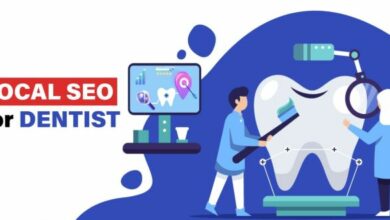The Ultimate Guide to Plastic Surgeon Marketing in 2025

In today’s highly competitive landscape, effective plastic surgeon marketing is more critical than ever. With an increasing number of practices entering the market, staying ahead requires innovative strategies and a deep understanding of your target audience. If you’re looking to grow your practice, attract more patients, and build a strong online presence, this guide will help you achieve your goals. For even more insights, check out this comprehensive resource.
Understanding the Importance of Plastic Surgeon Marketing
Marketing is not just about promoting your services—it’s about creating trust, building a strong reputation, and ensuring that potential patients see you as the go-to expert in your field. Plastic surgery is a highly personal and often emotional decision for patients, making it crucial to position your practice as approachable, reliable, and professional.
A well-rounded marketing strategy includes both traditional and digital methods. By integrating these approaches, you can create a comprehensive plan that reaches your audience wherever they are—online, offline, or in your local community.
Key Components of a Successful Plastic Surgeon Marketing Strategy
1. Build a User-Friendly Website
Your website is often the first impression potential patients have of your practice. It’s essential to ensure that your site is:
- Mobile-Optimized: Many users search for services on their smartphones. A mobile-friendly website ensures they have a seamless experience.
- Visually Appealing: Use high-quality images and videos to showcase your work, testimonials, and your clinic’s environment.
- Easy to Navigate: Include clear menus, contact forms, and calls-to-action (CTAs) like “Schedule a Consultation.”
- SEO-Optimized: Incorporate relevant keywords like “plastic surgeon marketing” to rank higher on search engines.
2. Leverage Search Engine Optimization (SEO)
SEO is vital for ensuring that your practice appears at the top of search engine results. Key steps include:
- Local SEO: Optimize your Google Business Profile and include location-based keywords.
- Content Marketing: Regularly update your blog with articles, FAQs, and guides related to plastic surgery.
- Backlinks: Collaborate with reputable websites to link back to your site, boosting credibility and ranking.
3. Social Media Marketing
Social media platforms like Instagram, Facebook, and TikTok are ideal for showcasing your work, sharing patient testimonials, and engaging with potential clients. Here’s how to make the most of it:
- Post before-and-after photos (with patient consent).
- Share educational content, such as “What to Expect During Rhinoplasty Recovery.”
- Use hashtags like #plasticsurgery, #cosmeticprocedure, and #beautyjourney to expand your reach.
- Host live Q&A sessions to answer common questions and establish yourself as an expert.
4. Paid Advertising
Investing in paid ads can deliver quick results by targeting users actively searching for plastic surgery services. Consider:
- Google Ads: Appear at the top of search results for terms like “best plastic surgeon near me.”
- Social Media Ads: Use platforms like Instagram and Facebook to run targeted campaigns.
- Retargeting: Re-engage users who visited your site but didn’t take action.
5. Patient Reviews and Testimonials
Positive reviews can significantly influence a potential patient’s decision. Encourage satisfied patients to leave reviews on platforms like Google, Yelp, and RealSelf. Share these testimonials on your website and social media to build credibility.
6. Content Marketing
Educating your audience through valuable content not only establishes authority but also helps with SEO. Ideas include:
- Blog Posts: Write articles like “Top 5 Questions to Ask Your Plastic Surgeon” or “The Benefits of Minimally Invasive Procedures.”
- Videos: Create short videos explaining procedures or highlighting your clinic’s state-of-the-art technology.
- Newsletters: Stay in touch with existing patients through monthly updates, promotions, and educational content.
Emerging Trends in Plastic Surgeon Marketing
As the industry evolves, keeping up with trends is essential to remain competitive. Here are some emerging strategies:
1. Influencer Collaborations
Partnering with influencers who align with your brand can help you reach a broader audience. Ensure that their followers match your target demographic for maximum impact.
2. Virtual Consultations
Offering virtual consultations is a convenient option for busy or long-distance patients. Promote this feature on your website and social media channels.
3. Personalized Marketing
Use data analytics to send personalized emails and ads based on user behavior, such as pages visited on your site or previous procedures.
4. AI-Powered Chatbots
Implement chatbots on your website to answer frequently asked questions and assist with appointment scheduling 24/7.
5. Video Marketing
Short-form videos are dominating social media. Invest in professional video production to showcase your practice, procedures, and patient success stories.
Avoiding Common Marketing Mistakes
While marketing can yield significant rewards, it’s essential to avoid these pitfalls:
- Neglecting Online Reviews: A lack of reviews or negative feedback can deter potential patients.
- Ignoring Analytics: Regularly track metrics like website traffic, conversion rates, and ROI to optimize your strategies.
- Using Generic Content: Tailor your content to address the unique needs and concerns of your audience.
- Overlooking Branding: Ensure that your branding—from your logo to your social media—is consistent and professional.
Measuring Success in Plastic Surgeon Marketing
To gauge the effectiveness of your efforts, monitor key performance indicators (KPIs):
- Website Traffic: Measure the number of visitors and their behavior on your site.
- Lead Conversion Rate: Track how many visitors turn into consultations or patients.
- Social Media Engagement: Assess likes, comments, shares, and follower growth.
- Return on Investment (ROI): Evaluate the financial returns from your marketing campaigns.
Final Thoughts
Mastering plastic surgeon marketing is essential for growing your practice and standing out in a competitive industry. By leveraging a mix of traditional and digital strategies, staying updated on trends, and continuously optimizing your efforts, you can build a thriving practice that attracts and retains patients.
For more in-depth tips and expert advice, visit The Bullzeye’s guide to plastic surgeon marketing.




